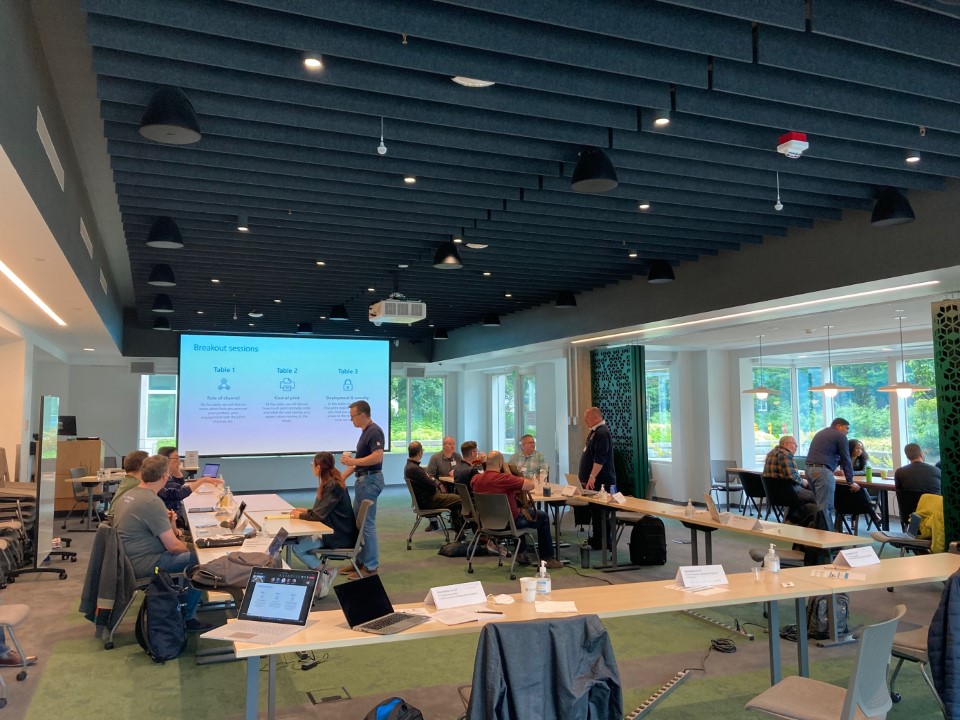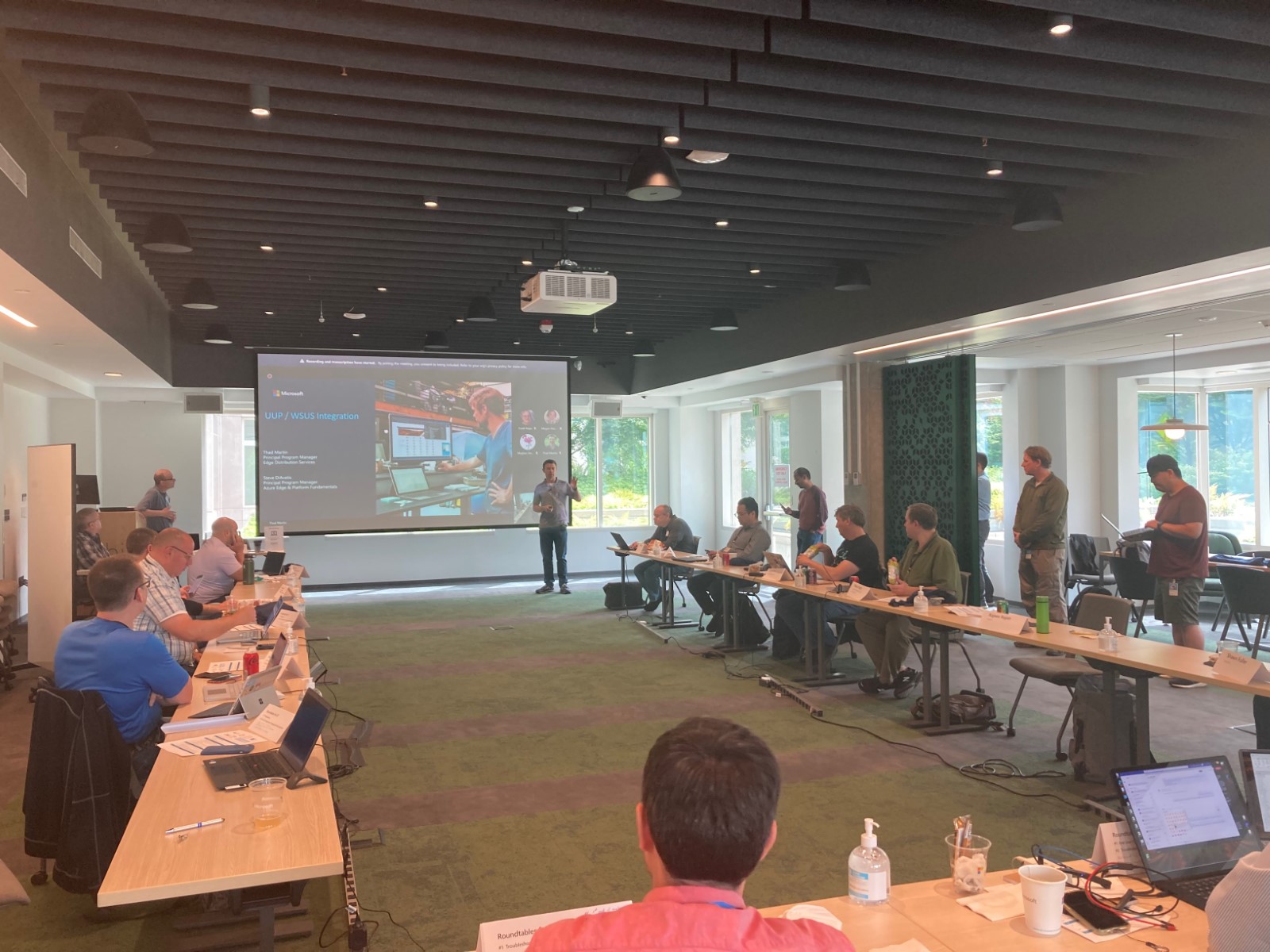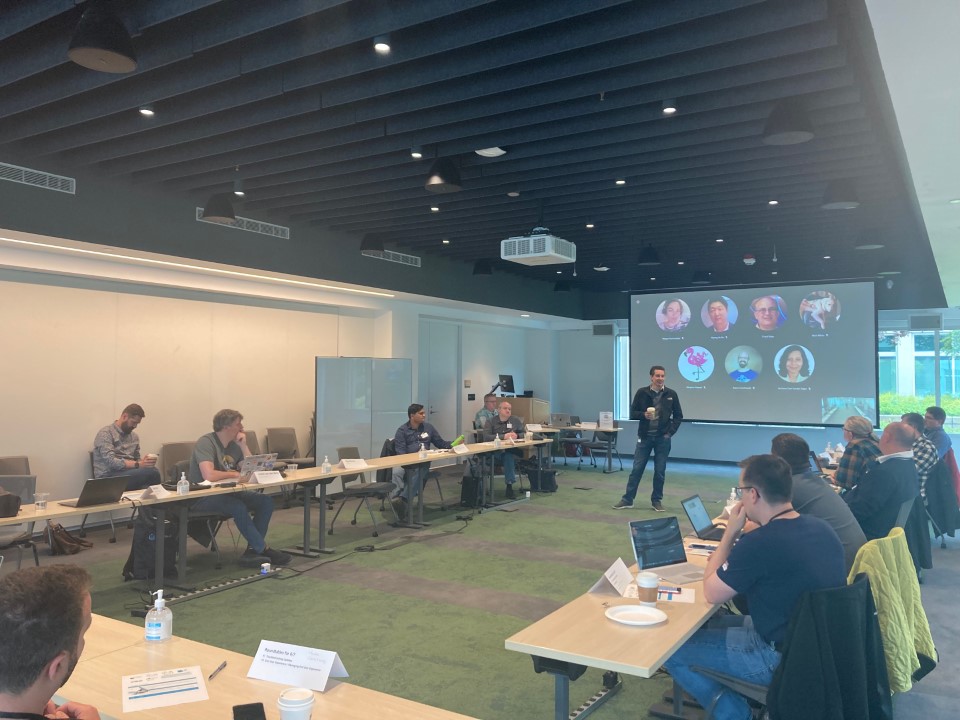Written - June 2022
I’ve been a Microsoft Most Valuable Professional (MVP) awardee now since 2010, which is a long time. In more than a decade I’ve had the opportunity to get many hundreds of online briefings from different product groups at Microsoft’s global headquarters in Redmond, Washington State, in the USA, and I’ve also attended many in-person MVP Summits there, where a couple of thousand MVPs from around the world engage in technical sessions, round-tables, and briefings from managers and engineers.
Nothing though compared to the opportunity that presented itself to me earlier this month, when I was invited to a special summit for the Windows Customer Connection Programme. I was only one of fifteen people invited to three days of round-table discussions with Microsoft’s engineers, and boy were they prepared to listen.

Much of the content is covered by a non-disclosure agreement that MVPs sign with Microsoft when they are welcomed into the programme, and so I would never consider publishing such information here. I did ask though if the feedback I gave Microsoft would be covered, and Microsoft were happy for me to share it with you, so I thought you might enjoy reading my own views on how Windows could be improved into the future, just in case some of them are actually implemented.
Environmental Concerns
The biggest and most significant concern I raised was over environmental issues caused by e-waste, and how Windows 10 could potentially exacerbate the problem. I wrote in my book The Green IT Guide that the United Nations estimates some 50 million tonnes of e-waste is generated each year, but that only 20% of it is currently recycled, with the rest going to landfill.
How does this relate to Windows 10 you ask. Microsoft have a policy of not allowing every PC and laptop running Windows 10 to upgrade to Windows 11. This is because of security concerns and so Windows 11-compatible PCs must have at least an eighth-generation Intel processor or AMD equivalent and a Trusted Platform Module (TPM) 2.0 chip.
The problem comes from potentially millions of perfectly good and usable PCs and laptops going to landfill prematurely when they’ve still got many years of life left in them. It is possible that some PCs running Windows 10 will only be five years old by the time end of support for the operating system comes around in October 2025. These PCs, I explained to Microsoft would not very likely have Linux or Chrome OS installed on them, and so would make the problem of e-waste bigger.
I am sadly not, because of the NDA, allowed to say what Microsoft’s response was, but I am allowed to say they understood the problem and responded favourably. I asked if they would consider extending the life of Windows 10 to try and avoid having these PCs going to landfill, and we’ll see if anything comes from this.

I also raised some suggestions about printing. The term “paperless office” was first used in 1975 but still we have printers in homes and offices. I suggested that Microsoft could do several things to try and discourage people from printing to paper.
- Making electronic PDF (Portable Document Format) files editable in Windows would be a great help. I don’t know about you but I have sometimes had to print a document, just so that I can write on it or sign it, so I can scan it back to my PC and send it via email. This is clearly wasting paper.
- I also suggested that Microsoft could change the default print dialog in Windows and in their Office apps, so that “Electronic Documents” and “Paper Documents” were separated into their own categories.
- Additionally, I suggested that quick “Send” buttons for email, messaging etc. could be added to the print dialog to encourage people to use electronic documents more.
Dual Accounts
Windows is the operating system of business but it’s also now the operating system of hybrid-work, working from home, and people using their own PCs for work. This does sadly mean a lot of switching back and forth between different Microsoft accounts, such as your own personal account and one used to sign into Azure AD or Windows 365.
My suggestion for Microsoft to get around this would be to allow the Edge web browser, which does seem to handle most of this interaction, to allow users to sign into two accounts simultaneously. This would mean that when they want to switch from one account to another, the browser knows which is which and the transition is seamless.
Document Security
This brought me on to the subject of document security because email is a problem. A few short years ago I thought it was crazy that millennials were shunning email in the workplace, as they were much more used to messaging services such as WhatsApp. Now though, it is very clear that the additional security and encryption offered by these services is far superior to email, which has no encryption at all.
If you ever need to send sensitive documents, or personal information then email is definitely not the way to do so. I suggested that Microsoft could bring Teams directly into their new Outlook email client, giving people are quick and easily accessible way to contact people without needing to use email.

Saving the Day
While we’re on the subject of documents, there were two suggestions I made that frankly drive me nuts, and on which many other people agreed. The first being that when you shut down a PC you’re often told you have a document open and do you really want to shut down the PC? Well, I initiated the shutdown so you might assume that’s certainly the case.
The case that I made to Microsoft’s engineers is why can’t the operating system send an auto-save command to any open programs, especially Microsoft programs such as Office when you shut down a PC. This means you don’t have to see this dialog, and the document will be auto saved anyway.
The second point many people agreed with me on. When you have an unexpected shutdown of an Office program you are asked, the next time you open the document that it had open at the time, if you want to open the saved version, or the auto-saved and recovered version.
The problem here is two-fold. Firstly that you’re not shown the contents of either of those documents, but also that if you then hit the “Recover” button there’s absolutely no going back from that, and that’s then just the version of the document you get.
I argued that Microsoft need a split pane view in this instance, that shows you both documents side-by-side, so that you can properly decide which is the version you wish to keep.
Low-Bandwidth Connections
I also raised concerns about individuals and businesses that are on low-bandwidth Internet connections, sometimes just using a cellular connection, and for whom downloading multiple copies of Windows Updates to different PCs, Microsoft Store apps and more becomes a problem.
Microsoft already have a way to share updates between PCs, but it doesn’t work well for standalone computers. Microsoft took this feedback well and I hope they act on it as, until recently, I myself have only had a lowly 3.5Mb/s ADSL connection.
Deferring Updates
Regards Windows Update, I asked why, when you can defer Windows Updates for a period of up to 30 days if you have a project going on and don’t want to restart your PC, or because there is a known bad update or driver in the wild, you can’t set Windows Update to always defer updates by seven days or more.
I thought this would be useful for many people to give additional peace of mind that, as and when the occasional problematic update does appear, Microsoft or a driver company have time to fix it before the user gets the update.
Windows 11 Start Menu
I like the new centred Start Menu and Taskbar icons in Windows 11, and indeed had been using a third-party utility for a few years that did the same thing in Windows 10. I do have issues with the “Recommended” section though, which really should be called “Recent Documents”. I make the following suggestions…
- That the user should be able to hid specific folders from this section because you might not want photos, music, or video to appear, and if you can identify a photo from your smartphone by its filename you’re much better than I am anyway. The other reason for this is so that sensitive documents and project files can be hidden from a more public view.
- Similarly I said that we should be able to add other folders, such as network shared or folder on other drives in the PC to the list, where documents in those folders might not otherwise appear.
- Lastly I suggested we should be able to hide recently opened apps, installers and non-document files from this part of the Start Menu.
Windows 365
I saved the last of my feedback and suggestions for Microsoft’s Windows 365 Cloud PC product that I’ve recently been trying for the first time. I would absolutely love to be able to tell you how Microsoft responded to my suggestions, but let’s just say it was overwhelmingly positive.
- Windows 365 is a very expensive product and it is clear that prices will fall, as they did when Office 365 was new. I wondered though about the potential to bring Windows 365 to consumer Microsoft 365 accounts. This would help people who want to run Windows desktop apps but who don’t have, don’t have room for, or can’t afford a laptop or desktop PC, and who use a computer such as a Chromebook or an iPad instead.
- I asked about future versions of Windows 365 and the potential to include better graphics and processing capabilities. This would enable the service to be used for tasks where an otherwise hugely expensive PC would need to be purchased, such as engineering, computer aided design, and video rendering and editing.
- Lastly I suggested that for everybody already using Windows PCs and laptops, who don’t need a full Cloud PC, it would be great for them to be able to stream just a single app from the cloud to their PC, such as video or photo editing on a PC with lower-end hardware.
Microsoft were very responsive to my own feedback and suggestions, and the other attendees contributed as least the same amount if not more. It will be interesting to see how much of this makes its way into future builds of Windows, but I will be enormously satisfied if some do.
Learn how to make your computer and smartphone use more environmentally friendly and sustainable with Mike Halsey’s book “The Green IT Guide“, now on sale from Apress, Amazon, and all good book sellers.




Thanks for giving us some insight into what you are doing as with the Windows Customer Connection Programme. One of my biggest gripes is with Office and the number of clicks before I can save a document where I want it. If I just save everything to My Documents, I guess the current process may result in few clicks, but I believe even for that use case, there is one extra click. I usually save documents in project folders that may or may not be in My Documents. I would much rather have the simple file save dialog when I click Save for a new document or click Save as for an existing document.
I have another similar gripe with Windows 11. When I right-click on a file, I must click Show more options to see my other items on the context menu that were there before. Again, additional unnecessary clicks. This may be good for some users but does not work well for many professionals.
You may have addressed a way to address both in a previous article that I missed or intended to go back and read. Please feel free to point out anything that you wrote on these two topics.